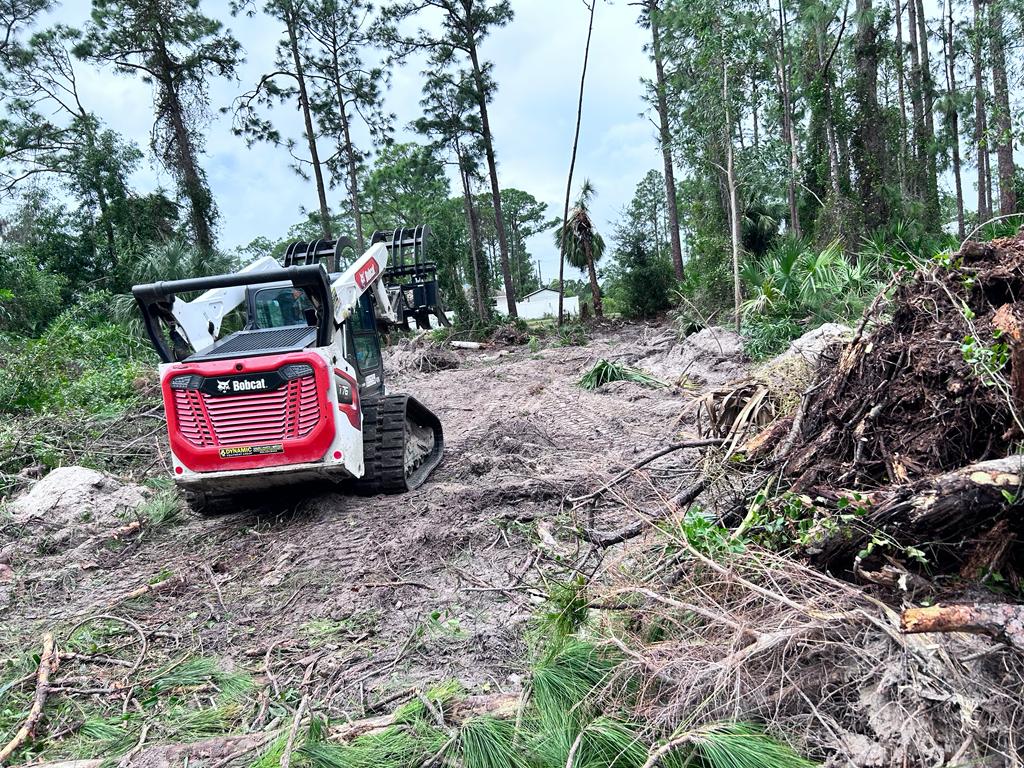If you find yourself dealing with a diseased, dead, or problematic tree on your property, it’s essential to consider its removal before it causes significant damage.
However, understanding the tree removal process can be a bit overwhelming for many homeowners.
This guide aims to provide you with a comprehensive understanding of why, when, and how to remove a tree, along with the associated costs.
Reasons to Opt for Tree Removal
Several reasons may prompt you to consider tree removal:
1. Structural Instability
A tree that poses a threat to people and property. Structurally unstable trees can result from diseases, pests, or natural factors, risking the safety of your home and surroundings. Removing such trees becomes crucial to prevent potential hazards.
2. Dying or Dead Trees
These can risk surrounding plants and shrubs. Dead or dying trees not only detract from your property’s aesthetics but also pose risks to the health of nearby flora. Timely removal prevents the spread of diseases and protects the overall ecosystem.
3. Aesthetic Concerns
While aesthetics vary, some trees may not align with your landscaping goals. Removing visually unappealing trees allows for a more pleasing and harmonious outdoor environment.
4. Landscaping Needs
Removal for specific landscaping requirements. If you’re planning to redesign your landscape or make way for new plantings, removing certain trees becomes a necessary step to achieve your desired outdoor space.
5. Overcrowding
Ensuring proper growth by reducing tree density. Overcrowded trees can compete for resources, hindering their growth. Removing excess trees allows for better nutrient distribution, ensuring the healthy development of the remaining ones.
Is Tree Removal Necessary?
If you are unsure whether a tree needs removal, consider the following questions:
1. Health of the Tree
Is it damaged, diseased, or dead? Damaged or diseased trees can become a breeding ground for pests, affecting the overall health of your outdoor space. Dead trees can pose safety risks, making removal essential.
2. Proximity to Structures
Is it too close to your home or other buildings? Trees situated too close to structures can become a liability during storms. Falling branches or the entire tree can cause severe damage, making removal necessary to protect your property.
3. Overcrowding
Does it contribute to an overly crowded property? Overcrowded trees compete for sunlight, nutrients, and space, hindering their growth. Removing some trees can alleviate this competition and promote a healthier environment.
4. Leaning Dangerously
Is the tree in a precarious position? A leaning tree, especially towards structures or walkways, can be a potential danger. Having a qualified arborist assess the tree’s condition ensures its safe removal to prevent accidents.
Understanding the Complete Process of Tree Removal
The tree removal process typically involves:
1. Cutting and Hauling Away Branches
Skilled tree removal professionals carefully cut and remove branches to ensure a controlled process. Proper disposal of branches is crucial to maintain a clean and safe work area.
2. Cutting Down the Trunk into Smaller Sections
Precision cutting of the trunk into manageable sections facilitates efficient removal. This step requires expertise to avoid damage to nearby structures.
3. Reducing the Tree to a Stump
Complete removal involves reducing the tree to a stump. Depending on your preferences, stump removal services can be added to eliminate any remnants and create a smoother landscape.
Additional services may include stump grinding, branch chipping, trunk splitting, and hauling. It’s crucial to discuss your specific needs and costs with the tree removal experts before hiring them.
The Cost of Tree Removal
Several factors influence the overall cost of tree removal:
1. Tree Height
Small, medium, large, or very large trees incur different costs. Taller trees typically require more advanced equipment and expertise, contributing to higher removal costs. Smaller trees may involve less intricate processes, reducing the overall expense.
2. Condition
The age, lean, multiple trunks, and decay affect expenses. The condition of the tree plays a vital role in determining removal costs. Older, leaning, or decaying trees may require additional precautions and efforts, increasing the overall expense.
3. Dead Trees
Larger dead trees may be more challenging and costly to remove. Dead trees, especially larger ones, pose unique challenges during removal. The complexity of the process can impact costs, necessitating specialized equipment and skills.
4. Diameter
Thicker trees, especially with harder wood like oak, can increase costs. The thickness of the tree directly affects the effort and time required for removal. Hardwood trees, such as oak, may incur additional costs due to their density and durability.
5. Location
Accessibility can impact prices significantly. Trees in easily accessible locations are simpler to remove, reducing the associated costs. Those close to structures, power lines, or challenging terrains may require more effort, contributing to higher removal expenses.
Average Cost of Tree Removal
On average, tree removal costs around $860, but prices can vary:
Small Tree Removal
$165 to $578. Smaller trees generally incur lower costs, reflecting the reduced equipment and labor involved in their removal.
Medium Tree Removal
$231 to $1000 or more. Medium-sized trees may require more intricate removal processes, impacting the overall cost. Factors like height and condition also influence the pricing.
Large Tree Removal
$529 to $1300The removal of larger trees involves more complex procedures, often requiring advanced equipment. This contributes to higher costs.
Very Large Tree Removal
$1200 to $ 1800. Very large trees necessitate specialized skills and equipment, contributing to the higher end of the removal cost spectrum.
Pine Tree Removal
$264 to $1900. Pine tree removal costs vary based on height. Taller pine trees may require more effort, impacting the overall expense.
Oak Tree Removal
$264 to $1300. The density of oak wood and the height of the tree influence removal costs. Taller oak trees typically incur higher expenses.
Fallen Tree Removal
$99 to $198. Removing fallen trees involves assessing their condition and species. Smaller, easily manageable fallen trees may incur lower costs.





